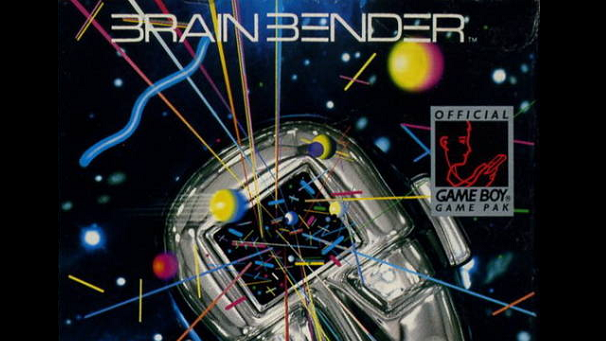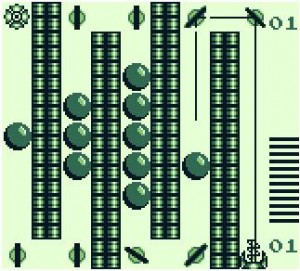
We continue our look at older games, and we really mean older games, with a look at a puzzle game for the Game Boy. Brain Bender was released for Nintendo’s hand held way back in November of 1991.
The game hearkens back to the time of simple and tough video games, with little room for error and even less in the ways of forgiving those errors. Brain Bender is challenging in the easy difficulty and darn near impossible on hard.
“Test you prowess as a master of mirrors in one of the world’s most exicitng new puzzle games, Brain Buster! Move the mirrors to manipulate your laser beams to destroy the gas spheres, shut down Electrobrains and finally destroy the enemy satellite! There are 120 challenging puzzles in this game – such a new challenge for you to solve. Get your mind in motion over one of the hotest puzzle games ever. Brain Bender!”
GAME PLAY:
Brain Bender is a simple game to play with much built in complexity.
The point of the game is to guide a laser beam of light from it’s source to the satellite, which will be destroyed. The light cannon is stationary and never moves, forcing the gamer to turn a series of mirrors to redirect the light in a new direction.
 Each level has a series of goals to achieve before the satellite can be destroyed. Many levels also contain gas spheres, all of which need to be destroyed before the level can be completed. Other levels have light bulbs included which need to be deactivated with the laser. Hitting the bulb a second time will turn it back on, which wastes valuable time to turn it off again.
Each level has a series of goals to achieve before the satellite can be destroyed. Many levels also contain gas spheres, all of which need to be destroyed before the level can be completed. Other levels have light bulbs included which need to be deactivated with the laser. Hitting the bulb a second time will turn it back on, which wastes valuable time to turn it off again.
To add to the challenge every level has a ticking timer counting down. Should the timer run out the the level is over.
Also if at any time the laser beam is reflected back towards the source, the timer runs down at an accelerated rate. One wrong move and you may not have enough time left to complete your stage.
There are three difficulties in the game – easy, medium and hard. The levels are the same in the different difficulties, but the time allowed to complete them changes. For example in easy mode you have 40 seconds to complete the second stage of level one, but in medium you only have 30 seconds. Try out hard mode and you are limited to just 10 seconds. The length of time you have to complete a stage varies from stage to stage.
If you do fail to complete a stage you can opt to retry, but doing so will cost you 1200 points. Luckily the more quickly you complete a stage will give you a time bonus to earn extra points. If you run out of points and it’s game over.
Further levels add more challenges:
– Reflective angled mirrors that can’t be moved
– Blocks that grow if light touches them for a few seconds which can block a needed path
– Glass orb which reflects light directly back to the source.
CONTROLS:
Adjustable mirrors are the only things that can be maniuplated in each stage, with the ‘A’ button rotating the mirrors clockwise and the ‘B’ button moving the mirrors counterclockwise. The d-pad moves the curser around the screen.
VIDEO & AUDIO:
The game plays a catchy tune during the levels which, considering the repetitiveness of the music, surprisingly doesn’t get annoying.
REPLAY VALUE:
The fact that the stages are exactly the same in each of the three difficulties is a great thing. With the limited time in the harder difficulty, the gamer can practice levels in the easier modes. With the relative speed and accuracy needed to get the angles of the mirrors right, you’ll keep coming back to try again.
FINAL THOUGHTS:
The only real flaw in the game is the password system. After completing each level the game rewards the gamer with a password to jump to that level. This is great in theory but the gamer will start off with no score by using a password. With points necessary to retry a failed level, you’ll be starting from scratch. I would complain that there should be a more complex password system used with more characters so that score can be carried over, but since this game was made in 1991 for an 8-bit handheld … I’ll let it slide.



